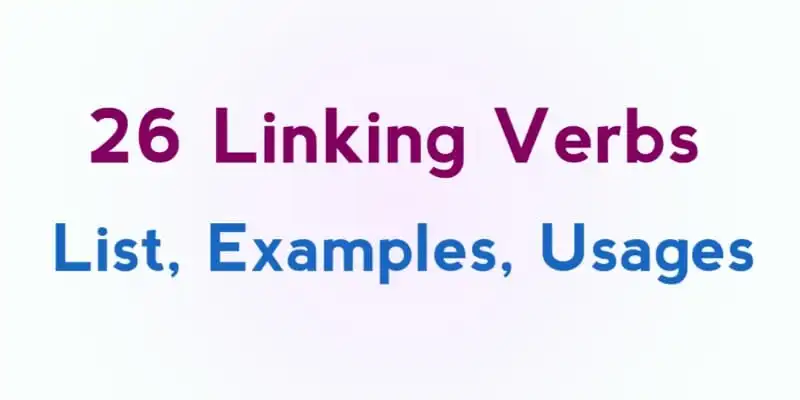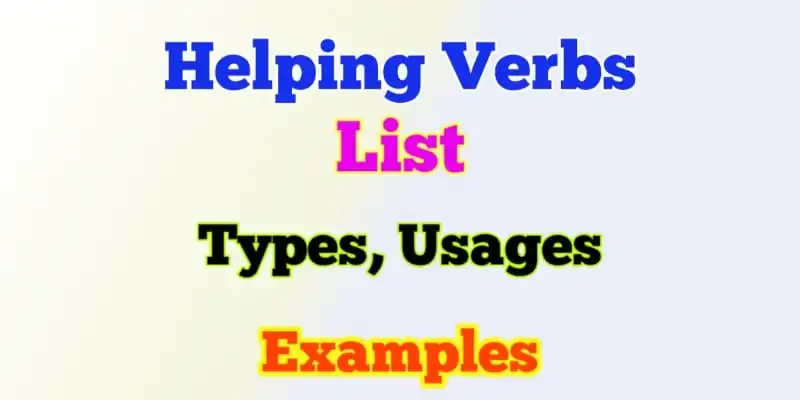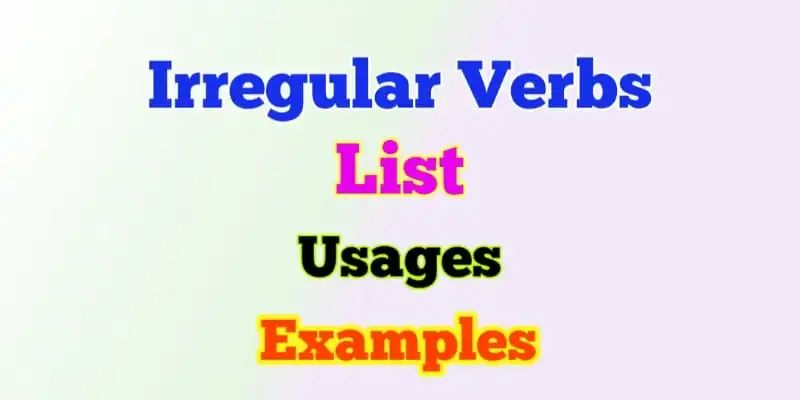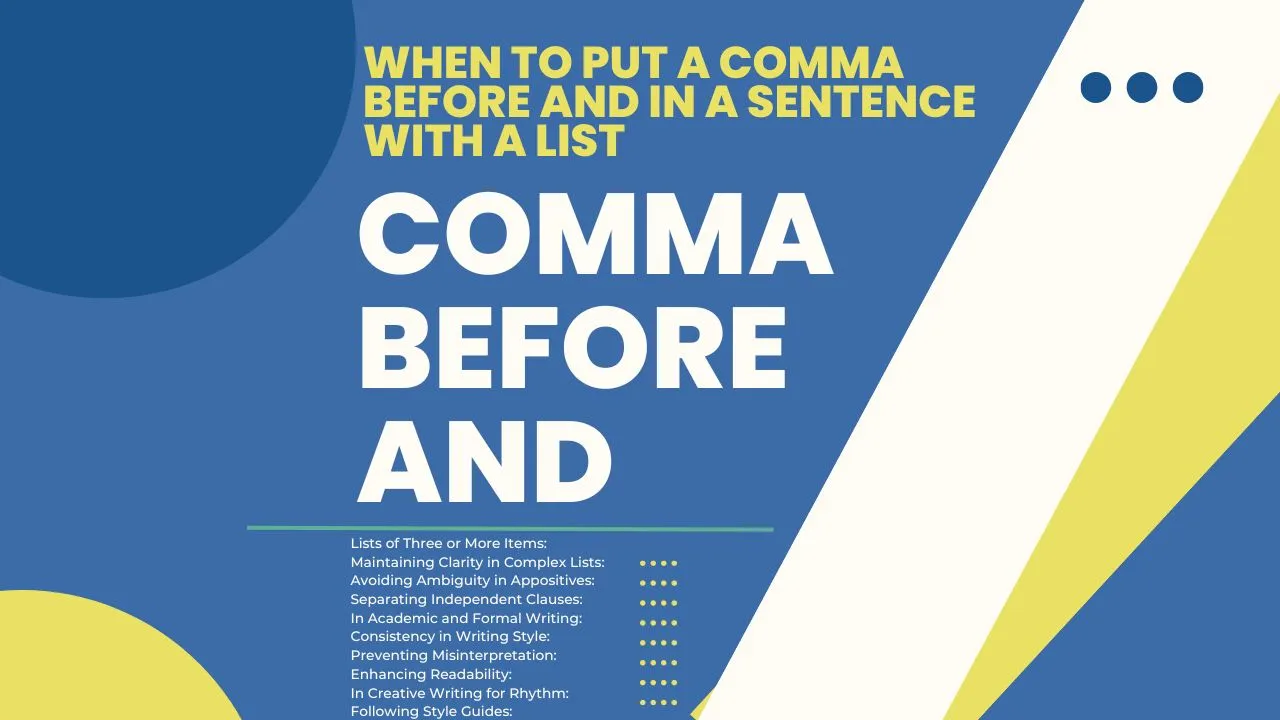Explore 26 Linking Verbs List, Examples, and Usages in English and learn how to identify linking verbs in sentences and enhance your English language skills.
Understanding the various types of verbs is crucial to constructing meaningful sentences. One category of verbs that plays a unique role in sentence structure is linking verbs.
Linking verbs, unlike action verbs that depict physical actions, serve as connectors between the subject and the subject complement in a sentence.
Here we will discuss the linking verbs, providing you with a comprehensive linking verbs list and examples to enhance your grasp of this essential grammatical concept.
The Basics of Linking Verbs
What Are Linking Verbs?
Linking verbs, also known as copulative verbs, are words that connect the subject of a sentence to a subject complement, which can be a noun, pronoun, or adjective.
The linking verbs do not show action; instead, they establish a relationship or state of being between the subject and the complement. Common linking verbs include “be,” “seem,” “become,” “appear,” and “feel.“
How to Identify Linking Verbs
Identifying linking verbs in a sentence is essential for understanding their role. You can identify them by following these guidelines:
1. Look for verbs that do not convey a specific action.
2. Check if the verb connects the subject to a complement that describes or identifies the subject.
3. Common linking verbs include “am,” “is,” “are,” “was,” and “were.”
A Comprehensive List of Linking Verbs
Here is a list of commonly used linking verbs:
1. Am
2. Is
3. Are
4. Was
5. Were
6. Be
7. Being
8. Been
9. Seem
10. Appear
11. Become
12. Look
13. Sound
14. Feel
15. Taste
16. Remain
17. Stay
18. Grow
19. Turn
20. Prove
21. Get
22. Come
23. Go
24. Sound
25. Look
26. Prove
The function of Linking Verbs in Sentences
Linking verbs play a pivotal role in sentence structure by helping to predicate (describe or identify) the subject.
They enable us to express states of being, conditions, or characteristics, making our sentences more descriptive and meaningful.
Different types of linking verbs
Linking verbs play a vital role in English grammar, and they can be categorized into different types based on their usage and meaning. Here are some of the different types of linking verbs with explanations:
State of Being Linking Verbs:
Examples: is, am, are, was, were, be, being, been
Explanation: The state of being linking verbs is the most common type and is called Helping or Auxiliary Verbs. They express a state of existence or a condition. They connect the subject to a complement that describes or identifies the subject’s state or condition.
For example, “He is happy” – “is” connects “He” to the state of being “happy.”
Sensory Linking Verbs:
Examples: look, smell, taste, feel, sound
Explanation: Sensory linking verbs involve the five senses. They link the subject to a complement that describes how something looks, smells, tastes, feels, or sounds.
For instance, “The flowers smell lovely” – “smell” connects “The flowers” to the sensory perception of “lovely.”
Becoming Linking Verbs:
Examples: become, became, becoming
Explanation: Becoming linking verbs indicates a change in state or condition. They connect the subject to a complement that represents a transformation or alteration.
For example, “She became a doctor” – “became” links “She” to the change of becoming a doctor.
Appear and Seem Linking Verbs:
Examples: appear, seem
Explanation: These linking verbs suggest a state or appearance that may not necessarily be a fact but is how something appears to be. They connect the subject to a complement that describes the perceived state or appearance.
For instance:
“The situation appears dire” – “appears” links “The situation” to the perceived state of being “dire.”
“He seems happy” – “seems” links “He” to the perceived state of being “happy.”
Remain and Stay Linking Verbs:
Examples: remain, stay
Explanation: These linking verbs indicate a continuous state or the absence of change. They connect the subject to a complement that signifies an ongoing condition.
For example:
“The weather remains pleasant” – “remains” links “The weather” to the continuous state of being “pleasant.”
“The patient stayed calm” – “stayed” links “The patient” to the absence of change in the state of being “calm.”
Turn Linking Verb:
Example: turn
Explanation: This linking verb implies a change in state, often involving a transformation. It connects the subject to a complement that represents a significant change.
For instance:
“The caterpillar turned into a butterfly” – “turned” links “The caterpillar” to the transformation of becoming a butterfly.
Get Linking Verb:
Example: get
Explanation: While “get” is primarily an action verb, it can also serve as a linking verb when it indicates a change in condition or state. It connects the subject to a complement that reflects a change.
For example:
“She got sick” – “got” links “She” to the change in condition of being sick.
Examples of Linking Verbs in Action
Linking Verbs with Nouns and Pronouns
Let’s explore how linking verbs work with nouns and pronouns:
1. She is a talented artist. (The verb “is” links the subject “She” to the complement “a talented artist.”)
2. The cake smells delicious. (The verb “smells” links the subject “The cake” to the complement “delicious.”)
Linking Verbs with Adjectives
Linking verbs can also connect subjects to adjectives:
1. The flowers look beautiful. (The verb “look” links the subject “The flowers” to the complement “beautiful.”)
2. He seems tired. (The verb “seems” links the subject “He” to the complement “tired.”)
Linking Verbs with Noun Phrases
Linking verbs can be used with longer noun phrases as well:
1. The weather remains clear and sunny. (The verb “remains” links the subject “The weather” to the complement “clear and sunny.”)
2. Their decision became a topic of discussion. (The verb “became” links the subject “Their decision” to the complement “a topic of discussion.”)
Linking Verbs Usages
Adding Description with Adjectives
One effective use of linking verbs is to add description to your sentences. Instead of stating something directly, you can use linking verbs to create a more vivid image:
1. Direct: The house is big.
2. Enhanced with a linking verb: The house is a spacious, two-story mansion.
Expressing States of Being
Linking verbs are perfect for expressing states of being or conditions. They allow you to convey someone’s emotions, physical condition, or characteristics:
1. She feels ecstatic about her promotion.
2. The old book seems fragile.
Common Mistakes to Avoid
Confusing Action Verbs with Linking Verbs
One common mistake is confusing action verbs with linking verbs. Remember that action verbs indicate physical actions while linking verbs connect subjects to complements.
Overusing “To Be” Verbs
While “to be” verbs (am, is, are, was, were) are important linking verbs, overusing them can make your writing less engaging. Experiment with other linking verbs to add variety to your sentences.
FAQs
What is the primary function of linking verbs?
Linking verbs connect the subject of a sentence to a subject complement, describing or identifying the subject.
Can linking verbs express actions?
No, linking verbs do not express actions; they establish a relationship or state of being.
Are all forms of “to be” considered linking verbs?
Yes, forms of “to be” (am, is, are, was, were) are common linking verbs.
How can I improve my use of linking verbs in writing?
To enhance your use of linking verbs, practice identifying them in sentences and experiment with different linking verbs for variety.
Where can I learn more about grammar and language usage?
For further resources on grammar and language, you may consider Approach English for language courses.







